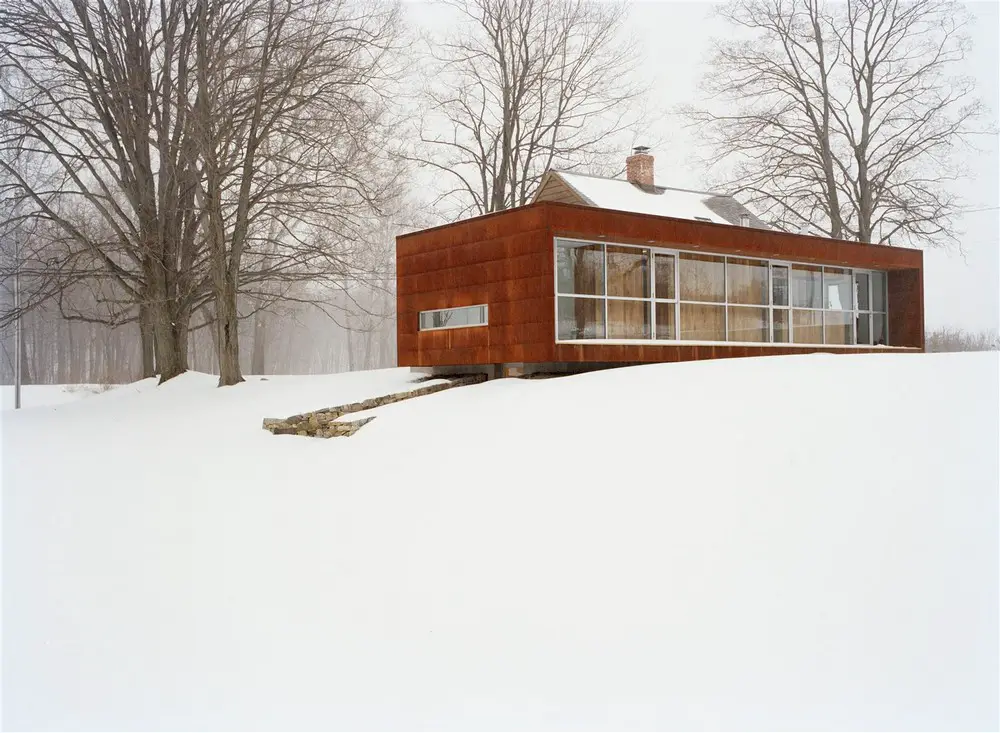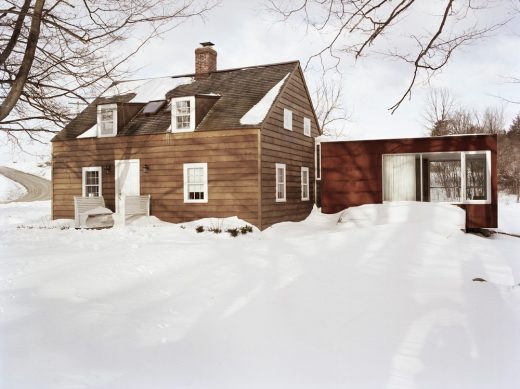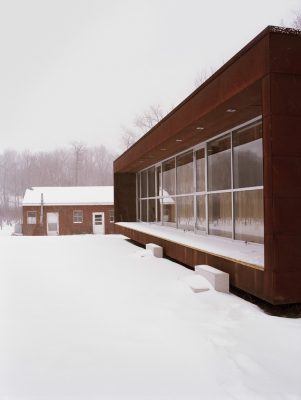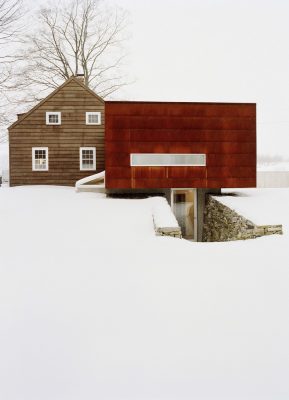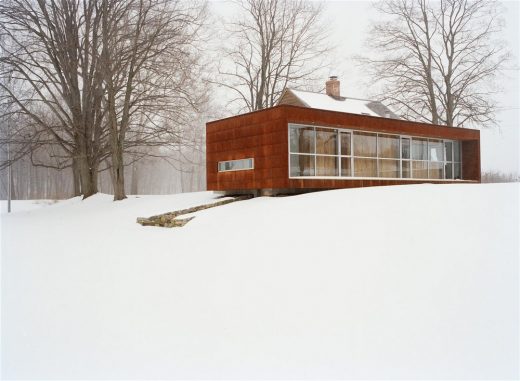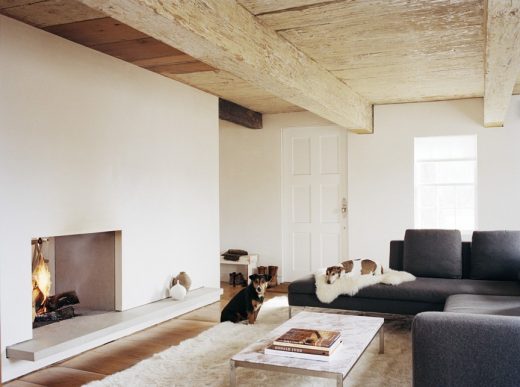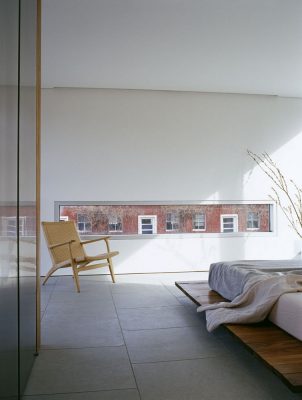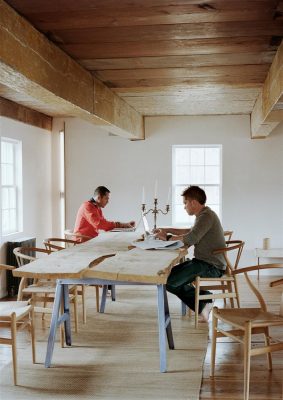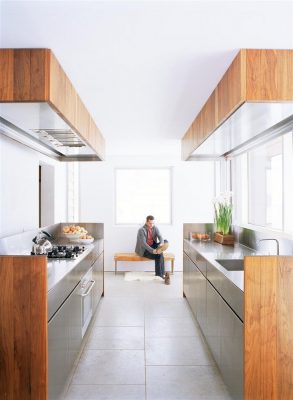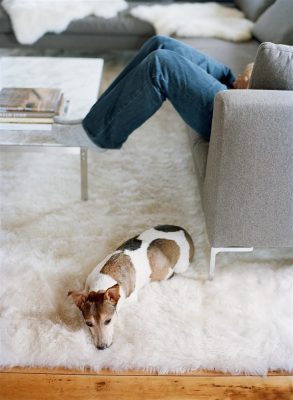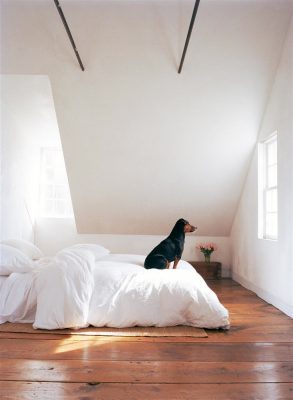Ten Broeck Cottage, Livingston Property, NY 18th C Home, American architecture images
Ten Broeck Cottage in Livingston
Residential Extended Building, NY design by Messana O’Rorke Architects, USA
Jun 23, 2017
Ten Broeck Cottage in Livingston, New York
Architects: Messana O’Rorke
Location: Livingston, NY, USA
Ten Broeck Cottage
The project started with the purchase of a much-neglected Eighteenth Century homestead in an apple orchard located in Columbia County, New York. The earliest recorded date for the house is 1734, however, many years of use and renovation have made the actual date unclear.
Fabricated in huge hand-hewn timbers the basic frame and form of the house conforms to the ‘H bent’ frame consistent with Dutch settlers of that time. This, some wide board flooring and a miraculously preserved wattle and daub wall in the field stone basement are about all that remained of the original house.
The brief was to develop a modern house within the existing frame and extend the house to provide additional accommodations. No restrictions were placed on the design except to respect the form the original Dutch House. The Spartan living conditions of the early settlers and the simple clean lines of their architecture were the inspiration to formulate a minimal design solution.
The design for the house developed organically; stripping back various additions and removing interior partitions from previous renovations revealed a classic house form, emulating a child’s perception of a house replete with four windows, a door, and sloped roof with a chimney on top.
Initial investigations by Messana O’Rorke Architects for the addition were to produce a design sympathetic to the traditional style, but then the solutions felt so weak and uncomplimentary to the simplicity of the original form that a new approach was developed. Trailer homes are a common site in rural Columbia County and while there aesthetic is generally of the lowest order there is something compelling about their simple rectilinear form; this became the conceptual catalyst for the addition.
It was impossible to determine what the original external appearance of the house was, so it was decided to respect it’s existing fenestration, which was probably initiated in the Nineteenth Century. The oldest surviving six over six sash window was removed and used as a template for the replacement of all the windows, which together with new wide board cedar siding and roof shingles gave the original cottage an eternal image consistent with its eighteenth century origins.
The addition’s rectilinear form is separated from the house by a continuous glass gasket, windows are replaced by glass planes and the exterior walls are clad in CorTen steel, which will rust to a point where they complement the cedar siding of the house.
The house was planned with two bed rooms and a bath room upstairs and a living room and dining room down stairs separated by a through wall fireplace. The addition contains the Kitchen, guest bedroom and shower room on the ground floor and an exercise room, sauna and steam room in the cellar.
The cellar has a large glass door that looks out over the lawn to the orchard. Internally the house’s only surviving finish was about a third of its original wide board floor, which were beautiful 1 1/2 inch thick 16-foot long boards of white pine some widths of which exceeded 24 inches. A search around wood salvage yards and investigations of contemporary alternatives produced nothing.
Then out of the blue fourteen hundred square feet of eighteenth century wide board flooring appeared at a local antique shop, having been salvaged from a house demolished twenty years ago and then left to gather dust in someone’s barn. The wood was procured and installed in the house. The floors of the addition by contrast are finished in limestone, which was also used for the hearth of the central fireplace in the house. Other interior finishes were shared throughout the house, plaster, exposed oiled wood, and stainless steels
The juxtaposition of the classic “house” form with the unapologetically rectilinear form of the addition gives a clear representation of each without confusing the origins of each. Trailer homes are a common site in rural Columbia County and while there aesthetic is generally of the lowest order there is something compelling about their simple rectilinear form; this became the conceptual catalyst for the addition. The Spartan living conditions of the early settlers and the simple clean lines of their architecture were the inspiration to formulate a minimal design solution
Photography: Bill Abromowitz
Ten Broeck Cottage in Livingston images / information received 230617
Location: Livingston, New York City, USA
New York City Architecture
Contemporary New York Buildings
Manhattan Architecture Designs – chronological list
New York City Architecture Tours by e-architect
425 Park Avenue – shortlisted design by Zaha Hadid:
Pier 40 Hudson River Apartments
Design: DFA
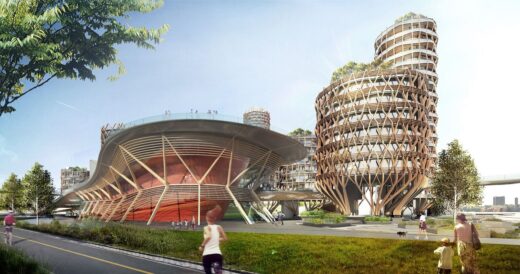
images courtesy of architects
Pier 40 Building
Comments / photos for the Ten Broeck Cottage in Livingston – page welcome
Website: Messana O’Rorke

